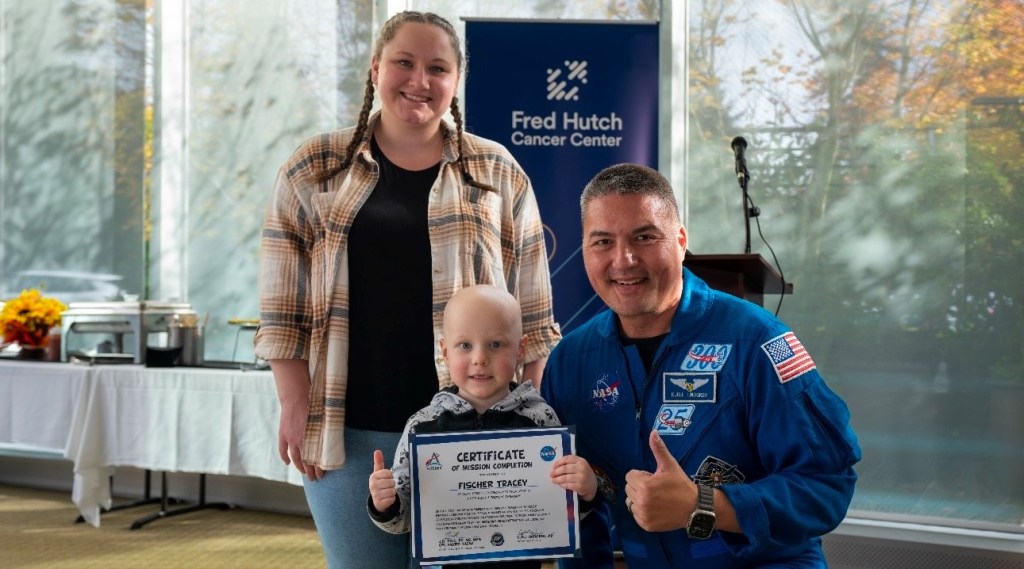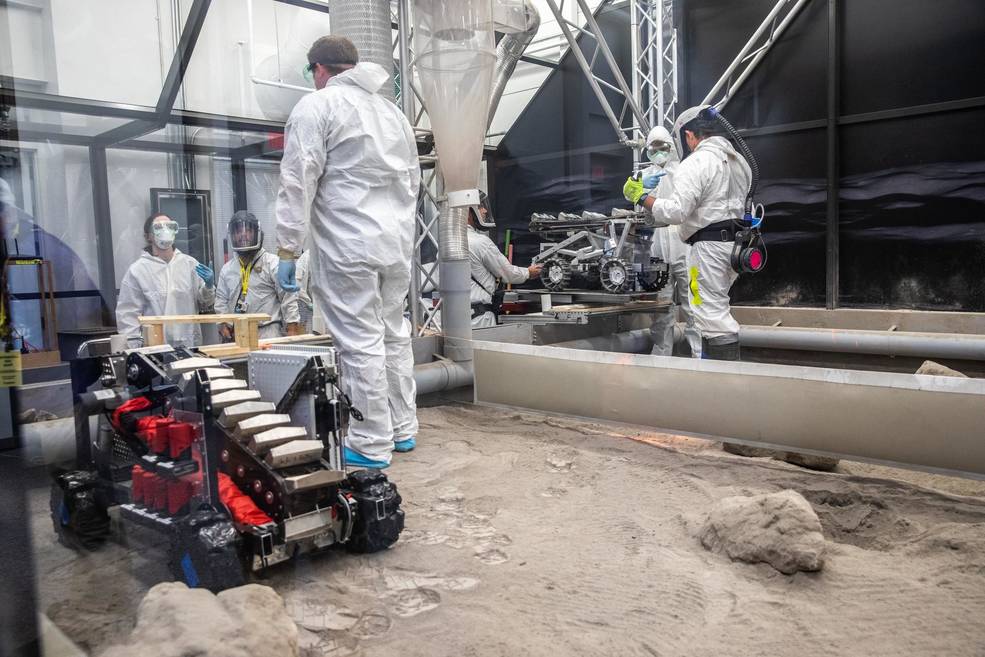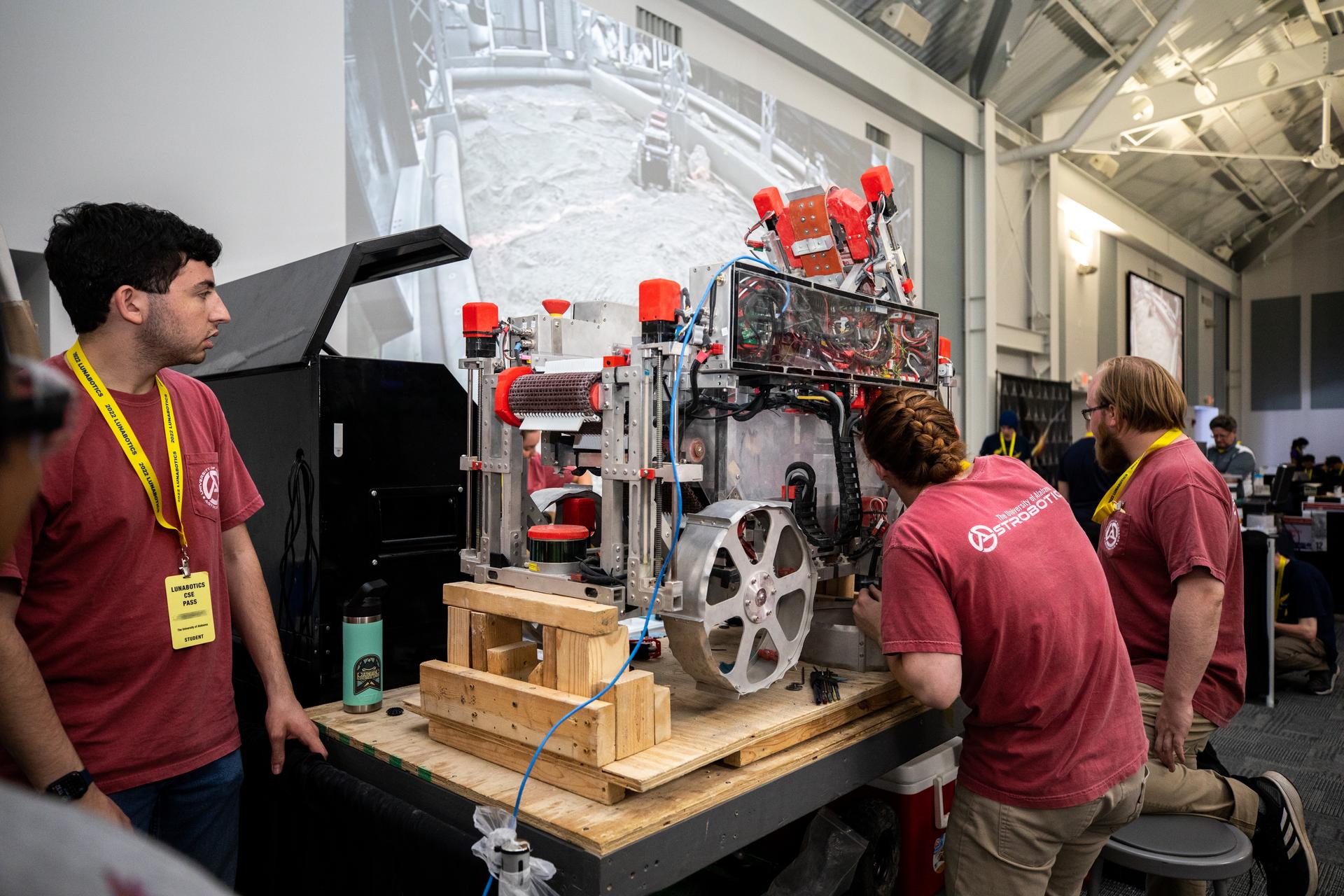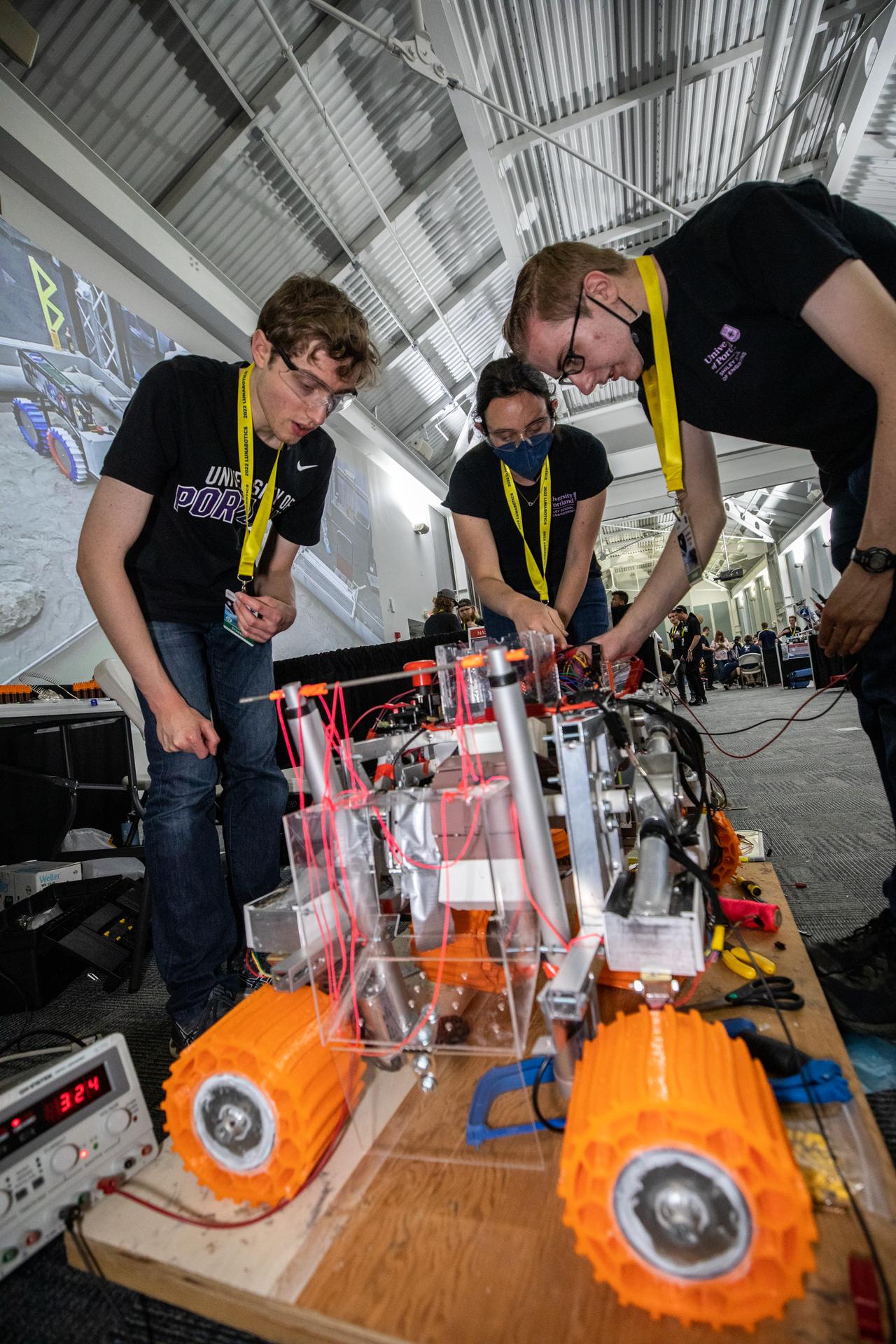By Linda Herridge
NASA’s John F. Kennedy Space Center
More than 30 one-of-a-kind robots mined simulated lunar regolith during NASA’s LUNABOTICS 2022 challenge, May 23 through 27, at the Center for Space Education (CSE) near the agency’s Kennedy Space Center Visitor Complex in Florida. Their goal was to dig well below the surface and collect as many rocks as they could and deposit them in a collection bin.
Former NASA astronaut Bruce Melnick cut the ribbon on the new mining arena during a ceremony early on May 23, marking the start of the 2022 competition.
“Just like the Apollo missions sparked a fire of curiosity and perseverance in the hearts of students so many years ago, Artemis is challenging this generation to dream bigger, think differently, innovate more critically, and be inspired like never before,” said Kennedy Space Center Director Janet Petro. “We are looking to the next generation of STEM students and encouraging their innovation, determination, and imagination as we return to the Moon and explore beyond.”
NASA’s LUNABOTICS competition challenges university-level teams to use the NASA Systems Engineering Process to design, build, and operate a lunar robot. The teams also perform public outreach, submit systems engineering papers, and demonstrate their work to a NASA review panel.
This year’s competition featured several “firsts.” The competition was renamed LUNABOTICS, from the previous Robotic Mining Competition. The first in-person competition in three years took place inside the CSE, where the teams prepared their robots to dig in the first indoor mining area. It also was the first time the teams were split up, with the first set of teams competing on May 23 and 24, and the second set of teams competing on May 26 and 27.
When the regolith settled and all of the teams’ collections were weighed in and recorded, the first place award for On-Site Mining went to Montana Technological University. The top prize, the Joe Kosmo Award for Excellence, went to the University of Alabama, for scoring the most points overall during the competition. The complete list of winners is included below.
Robert Mueller is a senior technologist and principal investigator in Kennedy’s Exploration Systems and Development Office, working primarily in the center’s Swamp Works. Mueller is co-founder of the mining challenge and has served as lead judge since the first mining competition in 2010.
“After three years of delay due to a government shutdown and COVID-19, we were finally able to host the LUNABOTICS competition in a brand new regolith simulant arena,” Mueller said. “In previous years, we were in rented tents, fighting the heat, humidity, lightning storms, and rain with flooding. Now we are in a first-class, safe, reliable, air conditioned, indoor facility.”
This year’s competition was not without some challenges. During their mining runs, some robots got stuck in the regolith or on obstacles placed in the mining arena, or they just didn’t move. But the teams persevered, making adjustments in real-time to prepare for their second runs the next day.
“An interesting effect was that the regolith simulant was drier than when it was outdoors in a tent, so the competitors noticed a change in its shear strength, causing it to fluff up, making it harder to drive on – just like the Moon!,” Mueller said.
Many veteran teams returned to the competition this year. Several new teams also joined the roster, including Lone Star College-CyFair in Texas, San Diego State University in California, New Mexico Tech, and the United States Military Academy (West Point).
Team Moonrockers were returning competitors from the South Dakota School of Mines and Technology. Team leader Morgan Tatge, a graduating senior, was excited about their robot, named Buzz, which was a senior design project. Many of the robot’s parts were 3D printed, and they hoped to achieve partial autonomy in the mining arena.
Also returning, the University of North Carolina at Charlotte robotic miner is named Rover Digs BP. The team, led by Cramer Ward-Collings, are all graduating seniors. “The excitement of the competition is one of the reasons we are here,” Ward-Collings said. “And also to represent our school and showcase our skills.”
A returning team from Worcester Polytechnic Institute in Massachusetts, brought their robot, Comet, named for a team member’s dog, and dubbed an honorary member. Team leader Tyreese James described the efforts they made to keep the robot as light as possible by including many 3D-printed parts, including the suspension system, cables, and clamps. “This competition has a very real-world or beyond application,” said team member Julia Sheats. “We see mechanical and software systems working together in real-world applications. And it’s all about space.”
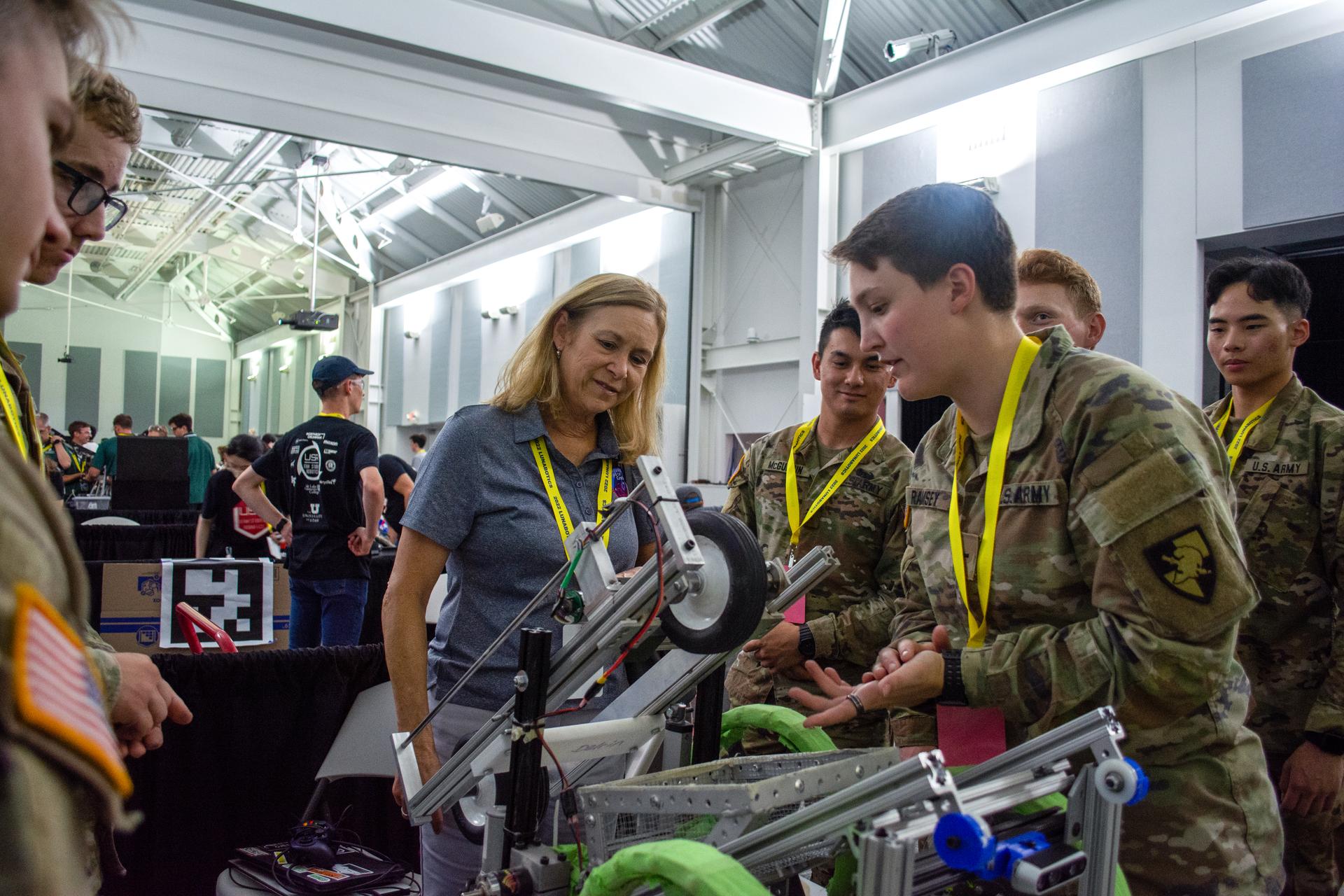
Many of the teams are working toward semi-autonomy or fully autonomous robots for future competitions. Nearly all of the robots had several 3D-printed parts. For many of the graduating students, the onsite portion of LUNABOTICS also served as their senior engineering design challenge and is an opportunity to stand out among their peers when applying for internships and positions in STEM careers.
“This year’s LUNABOTICS competition was a giant collaboration between NASA and Kennedy. Everyone did their best so this in-person competition could take place this year,” said Rich Johanboeke, lead coordinator. “These students are the Artemis Generation. We’re looking to see how this challenge evolves.”
The awards ceremony was held virtually on June 10. Portions of the competition can be viewed here for a limited time.
Winners List
Joe Kosmo Award for Excellence
The University of Alabama
Mining
First Place – Montana Technological University
Second Place – The University of Alabama
Project Management (Tie)
Illinois Institute of Technology
Miami-Date College Kendall
Michigan Technological University
New Mexico Tech
Southern Illinois University Carbondale
The University of Utah
University of Rochester
Vanderbilt University
Public Outreach
First Place – Miami-Dade College Kendall
Second Place – The University of Alabama
Third Place – Purdue University
Presentations and Demonstrations
First Place – Iowa State University
Second Place – Vanderbilt University
Third Place – San Diego State University
Honorable Mention – University of Alabama
Systems Engineering
Leaps and Bounds – Significant Improvement
Worcester Polytechnic Institute
Special Recognition
College of DuPage
Special Recognition
Lone Star College-CyFair
Special Recognition: Nova Award for Stellar Systems Engineering
University of Rochester
San Diego State University
New Mexico Tech
Miami-Date College Kendall
Special Recognition: Consistently Sustained Improvement
South Dakota School of Mines and Technology
Systems Engineering Paper
First Place – The University of Alabama
Second Place – Iowa State University
Third Place – Marquette University
Efficient Use of Communications Power
The University of Alabama
Judge’s Innovation Award
University of Illinois-Chicago
CATERPILLAR Autonomy Award
First Place – Iowa State University
Second Place – University of Alabama
Third Place – College of DuPage
Fourth Place – The University of North Carolina at Charlotte
Special Recognition: Robotic On-Site Perseverance Award
Lone Star College-CyFair



















